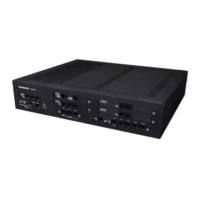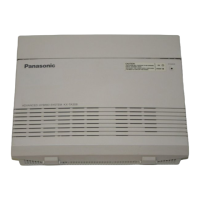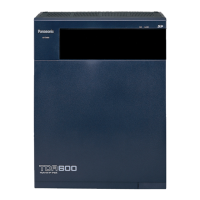2.2 Installing DSP Cards
CAUTION
• Before touching the product (PBX, cards, etc.), discharge static electricity by touching ground or
wearing
an earthing strap. Failure to do so may cause the PBX to malfunction due to static electricity.
• When installing or removing the optional service cards, the power switch must be turned off.
• When installing or removing the optional service cards, do not put pressure on any parts of the mother
board. Doing so may result in damage to the PBX.
Note
Make sure the AC power cord is not connected to the AC inlet of the PBX.
A DSP
card is a digital signal processor card with DSP resources that can be used for VoIP calls, conferences,
the Unified Messaging feature, and the DISA/OGM feature. The DSP cards are compliant with ITU-T G.
729A and G.711 codec methods.
Depending on the amount of your DSP resource needs, DSP S, DSP M, or DSP L cards can be installed. Up
to 2 DSP cards can be installed on the mother board.
To operate the PBX, at least one DSP S, DSP M, or DSP L card must be installed in one of the DSP card slots.
Note
• The
DSP Resource Advisor can be used to calculate DSP resource usage easily. For details, refer to
"9.32.1.1 PBX Configuration—Configuration—DSP Resource—Setting—DSP Resource Advisor" in
the PC Programming Manual.
• For details about the number of resources provided by each type of DSP card, refer to "4.3.3 DSP S
Card (KX-NS0110), DSP M Card (KX-NS0111), DSP L Card (KX-NS0112)" in the Installation Manual.
• For information about installing other optional service cards, refer to the Installation Manual.
Getting Started 13
2.2 Installing DSP Cards

